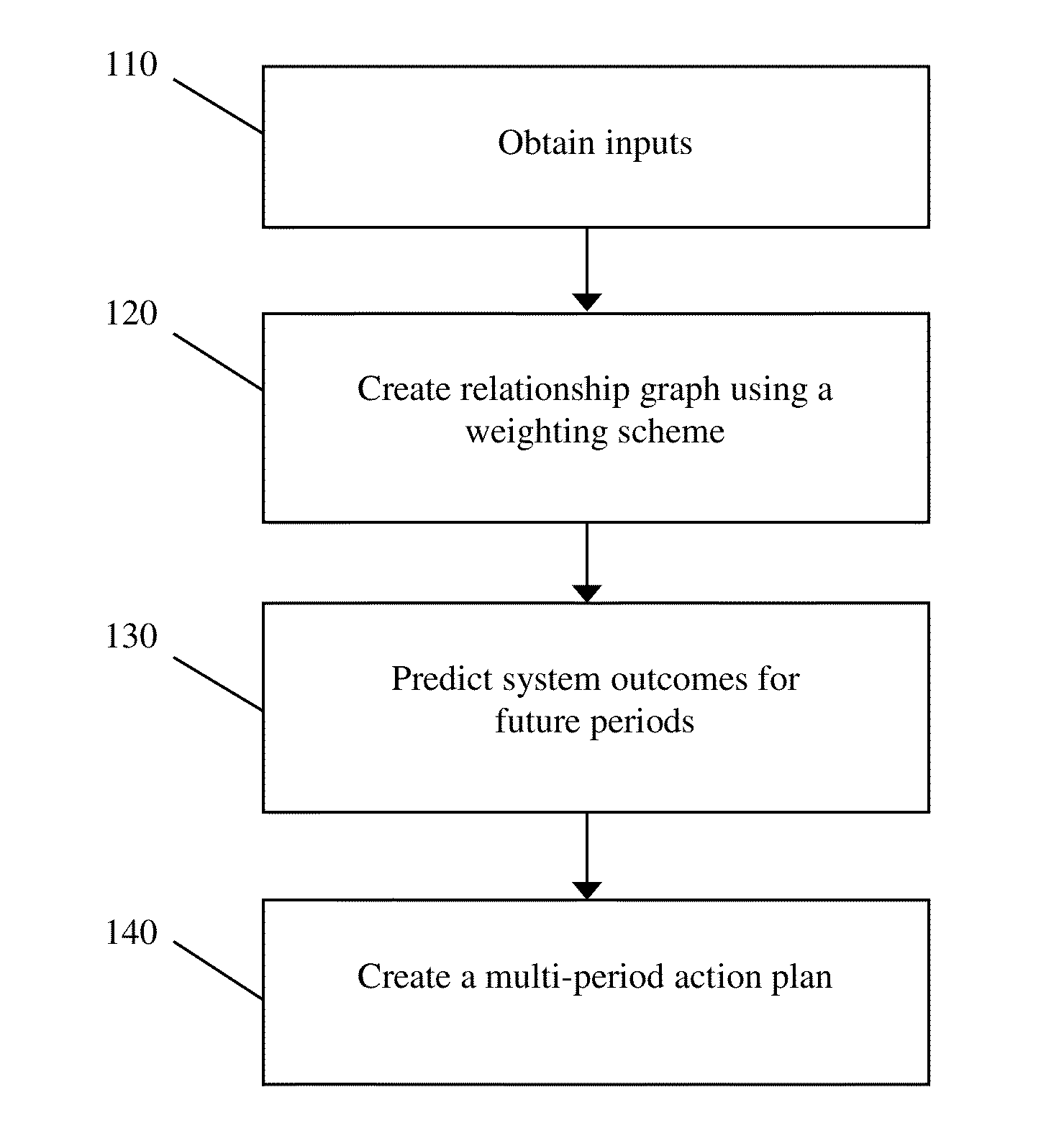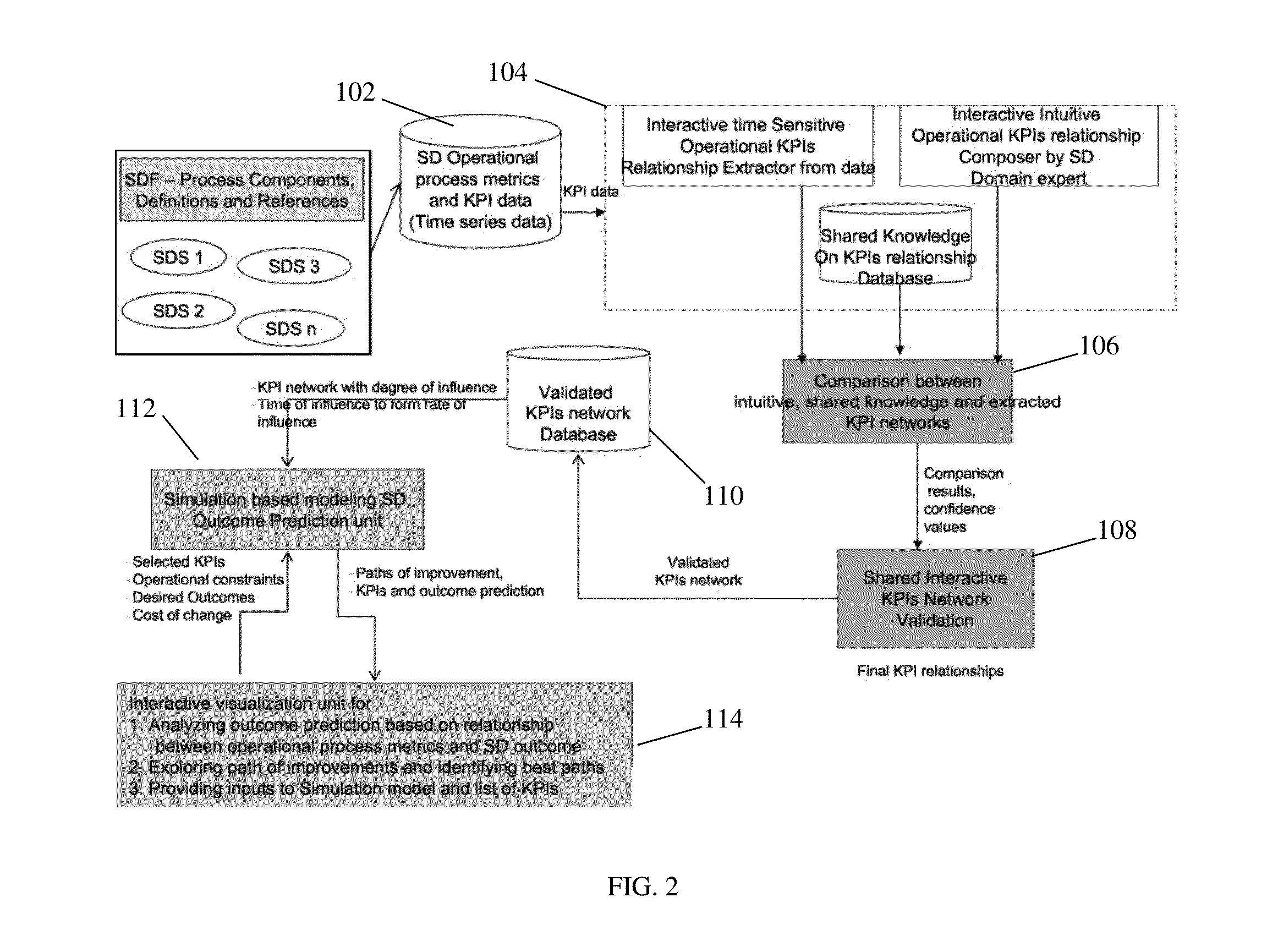Systems And Methods For Discovering An Optimal Operational Strategy For A Desired Service Delivery Outcome
a service delivery system and optimal operational strategy technology, applied in the field of optimization of service delivery systems, can solve the problems of missing performance targets, service operations management remains extremely complex and unpredictable, and human-provided service delivery systems (“sds”) tend to be significantly labor-intensiv
- Summary
- Abstract
- Description
- Claims
- Application Information
AI Technical Summary
Benefits of technology
Problems solved by technology
Method used
Image
Examples
example 1
[0025]According to one embodiment, the rate of influence is calculated or estimated by the following calculation:
Rate of Influence=Degree of Influence / Time of Influence
In a service delivery system where both operational and outcome KPI measurement is based on as-is states, the Degree of Influence can be measured by the correlation co-efficient between the operational (cause) and the outcome (effect) metric.
[0026]In this example, consider a pair of cause and effect metrics (X, Y) with data collected for T timestamps, such as X=[X1, X2, . . . XT], and Y=[Y1, Y2, . . . YT]. If h (in weeks) is the maximum timelag possible between a cause and an effect, then a, is defined as the correlation co-efficient between metrics X and Y at timelag i (in weeks), where a0 is the correlation when the cause takes effect instantaneously with no delay, and a1 is the correlation when the cause takes effect after 1 week, and so forth where aN is the correlation when the cause takes effect after N weeks.
[0...
example 2
[0030]According to one embodiment, the method or system maintains a weight of confidence for each of the sources of information and the final KPI relationship is a weighted combination. For example, S1, S2, and S3 can be three sources of information for every relationship edge eij between nodes vi and vj and αij (t), βij (t), and γij are the corresponding weights, where s1 and s2 are sources from experts or knowledge databases and s3 is the information extracted from data. The relationship between the node vi and vj is valid if the sum of the weights αij (t)+βij (t)+and γij rij(t) is greater than a threshold value vij rij the measured value from data at t. According to this embodiment, the weights αij (t) and βij (t) can be updated dynamically based on the measured value from data, such as the following:
αij(t+1)=(1−p)αij(t)+prij(t)
[0031]At step 130 of method 100, the method or system predicts the outcome for the future periods (for example, t+1, t+2, t+3, etc.) given one or more of ...
example 3
[0033]According to one embodiment, the method or system creates a three-week action plan to specify the target performance levels for each of the independent KPIs for each period in order to achieve the desired service delivery outcomes. In this example, the system is considering three KPIs called a, b, and c which are related as shown in FIG. 5. The desired outcome in this example is to move “c” to a value of 0.8.
[0034]According to this action plan, at week 1, KPI “a” should be increased due to an inflow of investment of c1, where the net outcome value of c converges to 0.7. At week 2, KPI “b” should be increased due to a further investment of c2, where the net outcome value is 0.68. At week 3, KPI “a” should be further increased due to an investment of c3, where the net outcome value is 0.81. This action plan therefore attains a net value of 0.81 at end of third week, with a total cost of c1+c2+c3. The cost reflects the investments that trigger change in KPIs “a” and “b.” Here, Φa...
PUM
 Login to View More
Login to View More Abstract
Description
Claims
Application Information
 Login to View More
Login to View More - R&D
- Intellectual Property
- Life Sciences
- Materials
- Tech Scout
- Unparalleled Data Quality
- Higher Quality Content
- 60% Fewer Hallucinations
Browse by: Latest US Patents, China's latest patents, Technical Efficacy Thesaurus, Application Domain, Technology Topic, Popular Technical Reports.
© 2025 PatSnap. All rights reserved.Legal|Privacy policy|Modern Slavery Act Transparency Statement|Sitemap|About US| Contact US: help@patsnap.com



